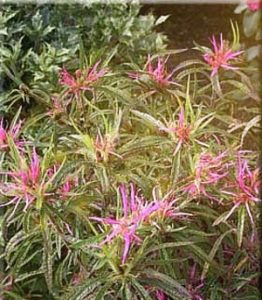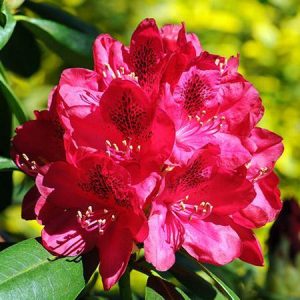
When talking about flowering plants and their kingdoms, there’s one kind that always stands out. Azalea, also known as the ‘Garden Royalty’ takes its place as the rightful owner of the throne in the garden plant empire. How did the Azalea become the ‘Garden Royalty’? Let’s dig more on that.
With the abundance of its flowers’ colors, sizes, and shapes, Azaleas are also known for their adaptability to survive in any type of environment. They have been blooming everywhere around Georgia, proudly parading its array of colors that range from the purest of whites to the deepest scarlet.
In addition, Azaleas fall into many classes and varying types. They can either be evergreen or can shed its foliage on certain seasons. Evergreen azaleas were also differentiated according to flower colors, sizes, shapes, and stem lengths. This is indeed a plant with so much variety, making it worthy of its title.
Planting royals in your garden
Royalty in the plant kingdom speaks of a class that’s easily maintained all year round. Despite its adaptability, however, there are still pointers you should know if you want this royalty inside your garden.
Mind the roots
The azalea’s roots are shallow, that’s why it’s not advisable to develop around them. They should be planted as such as the highest part of their root ball is particularly placed just above its soil level.
Feed its foliage
They drink up through their foliage so always remember to sprinkle or spray water in its leaves, and stems, not forgetting its roots of course.
Water evenly
Watering them must be done ideally every early morning when the sun is not yet on its heating peak. Maintain watering your azaleas evenly as it’s very crucial to its growth. Never try to dry them up of overwater them. The soil must be moistened, but not too wet. If planted beside irrigation, the best way to do is relocate them to another place where you can control their water intake.
They’re low-maintenance royals
If you’re a first-time gardener, you never have to worry about the azaleas at all. These royal toughies can endure any type of environment they are brought in– it’s precisely why they’re called “Garden Royalty”.
But like any other plant, they are susceptible to contagious diseases. It is recommended to spray them with fungicide every half of each month, beginning pre-summer to mid-June. Parasites can be easily transferred, so take a good eye on that. If affected branches are sighted, prune them immediately.
Make a wonderful spectacle in your garden and plant a couple of these azaleas in! With its array of pretty colors, sizes and shapes anyone can feast eyes on, your garden will look worthy to be marveled at by any type of guests— maybe even the royalties!
Take a look at these Azaleas and be the judge:
These are some of the Azaleas that you might want to consider planting on your beautiful gardens.

Formosa’ Southern Indica Hybrid

Pride of Mobile’ Southern Indica Hybrid

‘Red Ruffles’ Rutherford Hybrid

Gumpo Pink’ Satsuki Hybrid

George Lindley Taber’ Southern Indica Hybrid

Spider Azalea

Coral Bells’ Kurume Hybrid

Sherwood Red’ Kurume Hybrid
Have a look at our various Azaleas in Far West Turf & Nursery, Woodland, Washington. Or contact us for your inquiries.
 What is Rhododendron?
What is Rhododendron?
Rhododendron is a genus in the heath plant family (Ericaceae). It is a large genus with anywhere from 800 to over 1,100 wild species. The name Rhododendron comes from the Greek words, (“rodon” which means “rose”, and “dendron” which means “tree”), hence it is called Rose Tree. The Rhododendron species vast majority are native in the North Temperate Zone, especially in the moist acid soil of the eastern Himalaya and Southeast Asia, to the mountains of New Guinea. The flowers of Rhododendron are usually produced in trusses. Rhododendrons are also referred to as the King of Shrubs since Rhododendrons are regarded by many as the best flowering evergreen plants for temperate zones and landscapes.
Rhododendrons are known by many for its big leathery leafed shrubs with round clusters of white, pink and purple blooms. In Nepal, Rhododendron is the national flower, and in India, it is the state flower of Sikkim.
Rhododendrons are very dangerous, all parts of it, especially its leaves. It will show symptoms of stomach irritation, abdominal pain, abnormal heart rate, and rhythm, convulsions, coma, and death. Its honey should not be consumed as it is also toxic.
When should I plant Rhododendrons?
Best time to plant the Rhododendrons is in Spring or Fall. Its roots seldom extend over twelve inches deep, so planting them deeper than twelve inches will prevent it from getting enough air. The chief killer of Rhododendrons is wet soil. It needs moist and well-drained soil, but not waterlogged soil.
Best to apply a layer of compost under the shrub each spring. A two-inch layer of mulch is to be added to retain moisture and control the weeds, keeping much a few inches away from the trunk. In summer, water the plants if rainfall is less than 1 inch per week. In regions experiencing severe winters, protect evergreen Rhododendrons in the fall by wrapping burlap around them. Pruning is rarely needed and is done only to remove dead, damaged, or diseased branches anytime. However, when reducing height, it should be done after flowering in Spring. The Rhododendrons are not prone to any insects and diseases.
To learn more about Rhododendrons, don’t hesitate to reach out to us. We are more willing to help.

